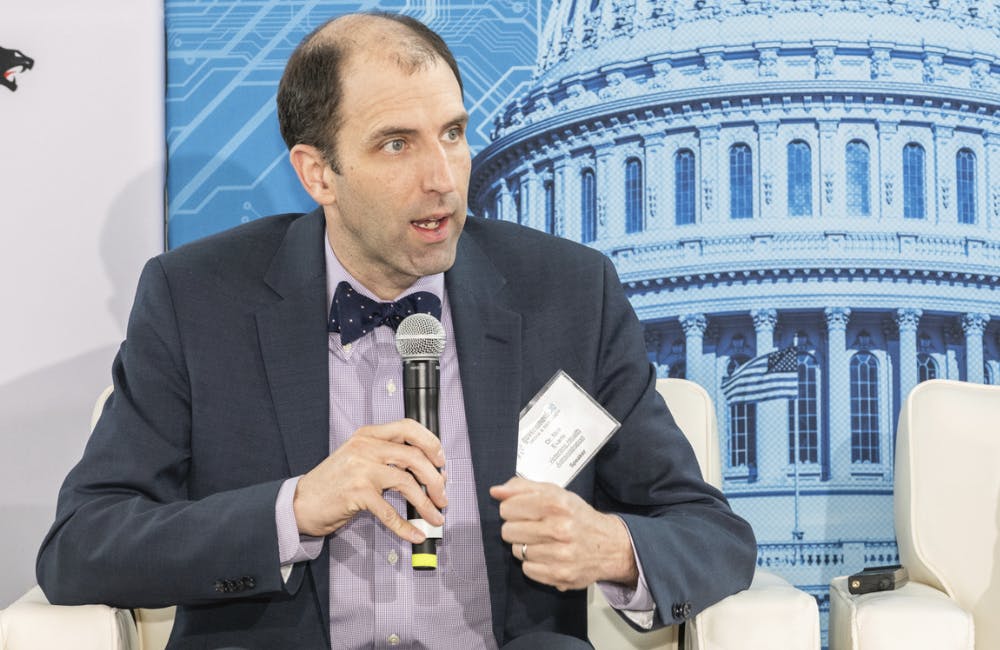VA Ramps Up Low Code to Speed Development Cycles
Carrie Lee, head of VA’s product engineering, talks platforms for faster development cycles.

The Department of Veterans Affairs is using a low-code approach and turning to software-as-a-service (SaaS) and APIs to drive fast, secure applications for veterans.
“We use the modern low-code, no-code technology to accelerate solution delivery and business outcomes,” Carrie Lee, the agency’s acting deputy CIO of product engineering, told GovCIO Media & Research. “We are using these platforms to exponentially increase our product development, deployment consistency and efficiency.”
Lee was appointed to her current position in the beginning of the year and leads four primary pillars: the veteran experience services portfolio, the Lighthouse API program, the Digital Transformation Center and the data and analytics product line.
In Lee’s previous role, she stood up VA’s cloud security program through partnering with the agency’s product engineering team to create the entire SaaS program.
Low-code is a software development approach that helps deliver products more quickly by minimizing the amount of coding that goes into each application.
This methodology uses drag-and-drop capabilities with a “point-and-click” framework, which has enabled the organization to create applications faster and more easily.
VA has already seen the benefits, including faster delivery times.
“We’ve accelerated our time to value for low-code products by six times and for no code, which we call SaaS, by three times compared to traditional software development,” she said.
The agency is focusing on a few key areas, like automation and reusing existing platforms or solutions.
“We look at what we have in our SaaS/PaaS product marketplace and if any customer comes to us with requirements for something that we already have a capability for, we direct them to that because, in that case, an acquisition is already done, the security’s already done and they can get up and running quickly,” Lee said.
Low-code solutions also improve VA’s security posture. Because the agency is reusing existing platforms, proven security controls are built into the development process.
“The number of controls that need to be configured for an application on a low-code platform are significantly less due to inheriting already ATO’d controls from the platform. Much of the security for low-code applications is part of the platform, and as long as it is managed at an enterprise level, the security implementation is consistent across all the apps on the platform,” Lee explained.
These efficiencies are also leading to major cost savings.
“The cost of delivery is lower on low-code because you’re only configuring so much. You’re not developing a whole platform or a whole software product from scratch,” Lee said.
There are a few frameworks that are supporting VA’s faster development cycles, including the standard SaaS implementation framework, VA’s product discovery methodology and continuous oversight framework. Through these guidelines, VA is making its products “as efficient and impactful as possible.”
The SaaS implementation framework has helped establish an optimized, standardized implementation lifecycle, including acquisition, security, go-live preparations, user provisioning and contingency planning. Lee noted that through VA’s SaaS program, the agency has delivered approximately 108 SaaS products to date.
VA is also standing up a software factory model, which enables rapid deployment of products by leveraging efficient development and delivery processes and a network of vendors. VA currently has developed its minimum viable product for the SaaS software factory and is working with product line managers to run a pilot.
“We are looking at some proven delivery methods across the organization and creating factories with them, where we will have a center of excellence … and then, we will have product teams that are taking over the operations of some of that original delivery method, allowing it to scale across the organization,” Lee said. “We’re looking at that for SaaS, low code, VA Platform One and some of our custom development environments.”
This is a carousel with manually rotating slides. Use Next and Previous buttons to navigate or jump to a slide with the slide dots
-

New Year, New Administration: What's Next for VA in 2025
VA sets its sights on modernizing its EHR, advancing interoperability and adopting emerging tech amid the presidential transition.
4m read -

HHS Accelerates AI, TEFCA in 2024
Micky Tripathi, tech policy and health IT leader, reflects on progress HHS has made with AI, data and TEFCA and outlines plans for 2025.
-

VA Focuses on Continuous Improvement for 2026 EHR Rollout
VA plans to resume rollout of its EHR in FY 25, focusing recent feedback to drive continuous improvement amid the presidential transition.
4m read -

Navigating Federal Zero Trust Development
Federal leaders from the Interior Department and CyberArk discuss their zero trust progress and what lies ahead amid shifting priorities.
26m watch








